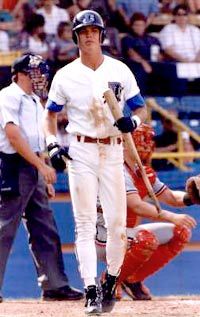What's a Minor League Team?
A minor league baseball team is affiliated with a major league team, and today any minor league team has two major goals:
- The development and preparation of young players for the big leagues
- The forging of a successful local business. (More later about how these two fit together.)
Most major league teams have minor leagues structured like this:
Advertisement
- Rookie team - This level is usually young players just out of high school or college, with an average age of 19.
- Class A - This level of play is just above the rookie team. Some major league teams, such as the Devil Rays, have both A and "advanced A" clubs playing in two different leagues.
- Class AA (Double-A) - Players are more experienced at this level (average age is 23) and more likely to jump from here to the majors. AA teams may include former major leaguers who are there temporarily to recover from an injury or work out a performance problem before returning to the big club.
- Class AAA (Triple-A) - This is the step just below the major leagues and the quality of the baseball at this level is very close to what we might see at a major league game.
Although there are some baseball stars who are drafted or signed to contracts and go straight to the majors, they are the exception to the rule. The majority of players play at least one minor league season. Occasionally, exceptional players, such as former Durham Bull Andruw Jones (now a centerfielder for the Atlanta Braves), whirls through all the farm teams in one season and winds up in the majors the following season.
Each minor league team plays in a league of teams with players at similar levels of proficiency, usually with all the teams in the league within busing distance of one another (long, dull bus rides are among some players' least favorite memories of their time in the minors!). As a player advances to AA and AAA, many of those bus trips are replaced by plane rides because league teams are geographically farther apart. (Salaries go up, too!)
All (with the exception of short-season teams which play 76 games) professional baseball players play at least 140 games, working seven-day weeks from early April until (depending on post-season play) the summer's end. (Rain-outs, which once provided an occasional day off, seldom happen anymore, due to the much improved drainage systems in today's ballparks. The only remaining day off? All-Star Game day in July and that's only a day off for players who aren't chosen to play in the game.)
Some minor league teams have long affiliations with major league clubs -- the Durham Bulls were part of the Atlanta Braves' farm system for 17 years. However, one minor league team might be affiliated with several major league systems over its lifetime. That's why, experts say, smart minor league team owners promote and market team loyalty, rather than loyalty to individual players who may be gone next week! In 1998, the Bulls began play as part of the minor league system of the Tampa Bay Devil Rays, an American League expansion team.
Some minor league teams use some version of their big club's name. However, because of the popularity and tradition of the Durham Bulls, the team has retained its name, and its familiar logo of a smoke-snorting bull.
